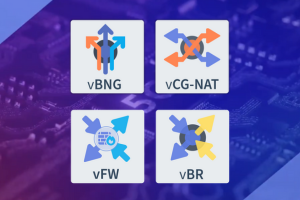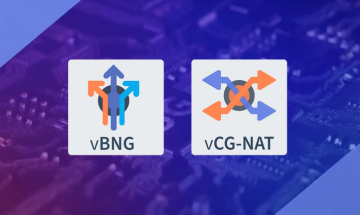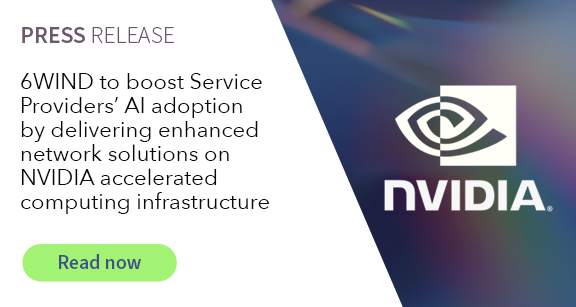Is Your Network Ready for the AI Traffic Surge?
AI is Transforming Networks—But Are They Ready?
Artificial Intelligence (AI) is no longer a futuristic concept—it’s here, powering autonomous systems, smart cities, real-time analytics, and immersive applications.
The global AI in telecommunications market is set to grow significantly, from USD 2.66 billion in 2025 to USD 50.21 billion by 2034[1], driven by advancements in network optimization, predictive maintenance, and AI-driven customer experiences.
It is inevitable that the rapid adoption of AI-powered applications demands higher throughput, lower latency, and increased security.
This explosion of AI-driven services is putting unprecedented pressure on telecom networks.
For service providers, the challenge is clear:
- Massive data volumes → AI-powered applications generate terabytes of data per second, creating significant traffic loads that traditional networks struggle to handle efficiently.
- Ultra-low latency requirements → Many use cases, such as autonomous vehicles, industrial automation, and real-time augmented reality, require immediate processing. Even milliseconds of delay can degrade performance.
- Increased operational costs → Scaling infrastructure with traditional networking models leads to higher costs in hardware, maintenance, and power consumption.
- Scalability concerns → New AI applications generate highly unpredictable traffic patterns, making it difficult for legacy networks to dynamically allocate resources without congestion or inefficiencies.
The big question: Can traditional networks handle the AI traffic surge?
Why Traditional Networks Are Not Adapted for AI
Telecom networks were originally designed for voice, video, and data—not AI-powered applications that demand real-time processing and low-latency responses. The key challenges include:
1. Centralized Network Bottleneck
Most service providers rely on centralized data centers, where all traffic—including AI workloads—is processed before being sent back to the end user. This architecture:
- Increases latency → AI applications require real-time responses, but centralized processing delays decision-making.
- Overloads the core network → The constant back-and-forth of massive AI-generated data strains network capacity, creating bottlenecks.
- Consumes more bandwidth → AI-driven applications like autonomous drones and smart factories generate large amounts of data that must travel across the network, increasing congestion.
2. Scalability & Sustainability Challenges
AI applications are dynamic, with traffic loads fluctuating unpredictably. Traditional networks lack the flexibility to scale on demand, leading to:
- Energy waste → Standard networking hardware consumes large amounts of power, even during periods of low activity.
- Performance inefficiencies → AI-driven use cases like edge computing and real-time analytics demand networks that can scale dynamically—something legacy networks are ill-equipped for.
- Higher infrastructure costs → Service providers must constantly upgrade hardware to meet AI traffic demands, increasing total cost of ownership (TCO).
For service providers, the message is clear: Legacy networks need a transformation to support workloads efficiently.
The 6WIND Solution: High-Performance, Secure and Optimized Networking
To meet the demands of AI-powered applications, service providers need ultra-efficient, low-latency, and scalable networking solutions. This is where 6WIND’s Distributed User Plane Function (dUPF) solution comes into play. The dUPF solution can be deployed over a shared AI-RAN platform, allowing local AI traffic breakout at the edge, further reducing latency and optimizing resource allocation.
6WIND UPF is designed to:
- Process massive traffic loads at the edge with minimal latency → Instead of sending data to a centralized core, 6WIND processes traffic closer to the user, reducing drastically latency and improving response times.
- Reduce operational costs with a lightweight, software-based approach → Unlike legacy hardware-dependent UPFs, 6WIND’s software-based solution eliminates the need for expensive infrastructure investments.
- Optimize network scalability to handle future AI-driven services → Whether it’s autonomous robots, smart grids, or 6G-powered applications, 6WIND’s UPF architecture adapts seamlessly to evolving AI workloads.
- Minimize energy consumption, making networks more sustainable → Networks should be energy-efficient by design. 6WIND’s architecture ensures low power usage while maximizing throughput.
Key Features of 6WIND UPF
- Distributed Architecture → 6WIND UPF deploys multiple processing units closer to the network edge, drastically cutting down latency and reducing reliance on core network infrastructure.
- High-Performance Packet Processing → Using advanced acceleration techniques like DPDK, 6WIND processes AI traffic with ultra-low CPU & memory consumption, allowing for optimized performance even at high loads.
- Multi-Platform Compatibility → Whether running on bare metal, VMs, containers, or cloud environments, 6WIND UPF ensures seamless integration without requiring a hardware overhaul.
- Energy-Efficient Design → AI workloads demand sustainable network architectures. 6WIND UPF minimizes power consumption, significantly reducing operational expenses and improving environmental impact.
The result? Service providers can future-proof their networks and seamlessly integrate AI-driven applications without overhauling their entire infrastructure.
AI is disrupting traditional telecom networks. The time to optimize for scalability, efficiency, and low-latency traffic management is now.
Contact us for more information: https://www.6wind.com/contact/
[1]”AI in Telecommunication Market Size, Share, and Trends 2025 to 2034″ https://www.precedenceresearch.com/ai-in-telecommunication-market



